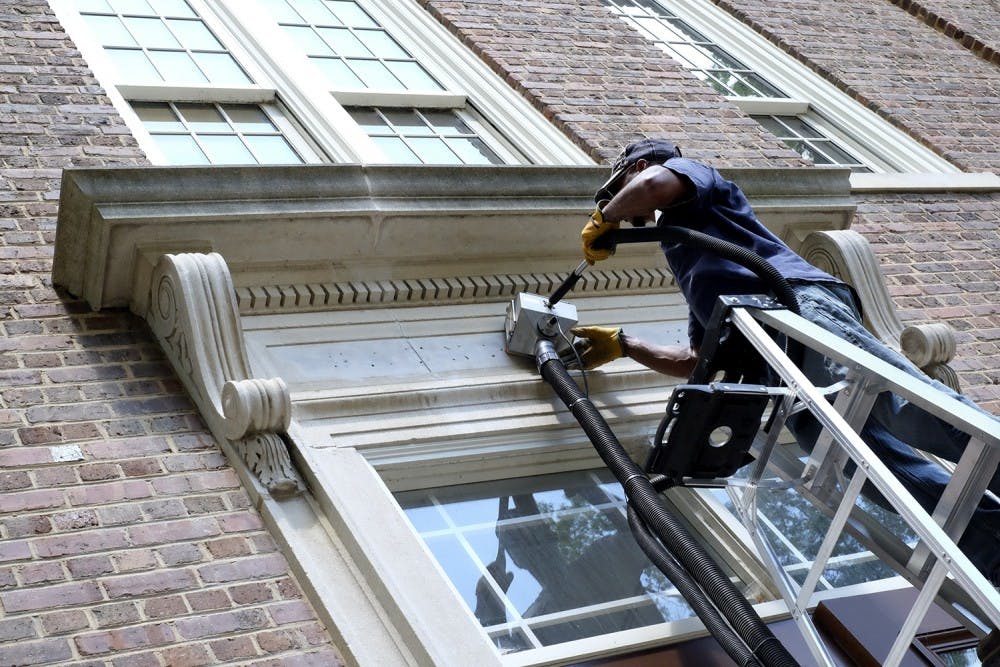Some of the buildings on campus with names tied to white supremacy include Josephus Daniels Student Stores, Hamilton Hall, Spencer Residence Hall, Mitchell Hall, Swain Hall, Julian Shakespeare Carr Building and Aycock Residence Hall.
Charles Aycock was a governor of North Carolina whose policies ended the Black vote in North Carolina for over 60 years. East Carolina University, Duke University and the University of North Carolina at Greensboro have all renamed buildings on their campus previously named for Aycock.
UNC history professor William Sturkey said the 16-year moratorium shows that the BOT is not interested in exploring the University’s history.
“What they’re actually interested in doing is protecting these commemorative sites that were established by white supremacists who ruled the campus before federal law ended segregation,” he said. “That means they’re not only validating a white supremacist interpretation of the past but also helping to rebrand a new version for the future.”
Sturkey, who works in Hamilton Hall, said while not all building names commemorate violent historical figures, there are many named after people who were very influential in crafting Jim Crow laws.
“What we’re dealing with is basically is a campus that was created and curated to help celebrate and promote white supremacy in ways that are fundamentally at odds with a desegregated campus,” he said.
'A missed opportunity'
Maggie Horzempa, chairperson of UNC College Republicans, does not believe buildings with ties to white supremacy should be renamed, although she sees why some people would be bothered by these building names.
“I feel that if buildings were to be in the process of being renamed, or this was discussed, not just students at UNC should be involved but taxpayers should also be involved since UNC is a school that runs off a good amount of taxpayer money,” she said.
Horzempa said she hopes the process of renaming buildings will involve more discussion than happened with Silent Sam being removed.
“I feel that with the events surrounding Silent Sam — the lawlessness and the anarchy that was allowed to happen on our campus will have to be talked about,” she said. “I hope these are opportunities where students and staff members and the community can foster discussion about these things and make decisions as a community.”
To get the day's news and headlines in your inbox each morning, sign up for our email newsletters.
Coleman Johnson, president of the UNC chapter of Turning Point USA, said the forced removal of Silent Sam could create a cycle of students removing other things using mob rule.
“I’m fine with changing names or removing them if it's done through a legal process, but I think the University seeming to approve, and plenty of professors approving, of mob rule to tear the statue down is wrong, and it’s going to set a bad precedent for the University,” he said.
History Ph.D. student Lindsay Ayling said Silent Sam and the building names point to the problem of the UNC administration not confronting white supremacy at UNC.
“It’s not only in the names of the buildings, but those symbolic issues are representative of larger problems, like a lack of diversity in faculty and student body,” Ayling said. “There’s no value in continuing to do something just because it’s been done in the past. If something promotes a campus of racism, then it should be removed.”
History professorAnne Whisnant said it seems the administration is afraid of the campus’ history and “its present echoes.”
“We’ve had a missed opportunity to really open up and look straight in the eye at our University’s history and confront it in a straightforward way and also take seriously the kind of pain that is imposed on people in our present world and in our present University community by those histories,” she said. “To a public historian, this feels like a missed opportunity.”
@HannerMcClellan
university@dailytarheel.com



